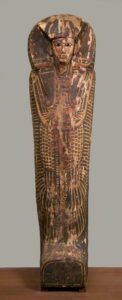
The swirling vortex of symbolism has long held us enthralled and intrigued. Over eons, artists, philosophers, and scholars have generated a slew of symbols- complex and poignant, simple yet profound. Whether etched on ancient artifacts or inscribed in the sacred texts of global civilizations, symbols represent an array of meanings, often delving into the heart of primordial human fears, hopes, and existential longings. Recognizing and interpreting these symbols is akin to unearthing fragments of a cosmic puzzle, piecing together the enigmatic story of human civilization.
The Egyptian Ankh and The Concept of Eternal Life
Perennially associated with the ancient Egyptians, the Ankh is a fascinating symbol, akin to a key with a teardrop-shaped loop in place of the tooth. As the eminent Egyptologist Sir Alan Gardiner observes, the Ankh probably symbolizes life or possibly the ‘breath of life’. A vibrant testament to the Egyptians’ obsession with immortality and their unbending faith in life after death.
The Lotus and Spiritual Enlightenment
In the pantheon of Buddhist and Hindu symbols, the Lotus holds a prominent place. The evolution of the lotus flower from mud—a metaphorical manifestation of human spiritual transition from materialistic desires to transcendental enlightenment—is recorded beautifully in Buddhist scriptures.
According to spiritual leader Dalai Lama, the unfolding of the lotus petals signifies the gradual expansion of the soul, its blossoming into enlightenment akin to a lotus blooming under the radiant gaze of the sun. The Lotus symbolizes rebirth to a higher plane of consciousness.
The Yin Yang and the Balance of Life
The Oriental world has gifted us the Yin Yang—a harmonious fusion of two halves. According to Taosim founder Lao Tzu, Yin and Yang epitomize how seemingly opposing forces may not only be interconnected but also interdependent, thus establishing equilibrium in the universe. The Yin Yang, then, is a powerful emblem of balance, a subtle reminder of the harmonious rhythm underpinning the cosmos.
Hamsa and Divine Protection
The Hamsa—a palm-shaped symbol houses an eye at its center and is believed to fend off evil, owing its roots to the ancient Middle Eastern culture. A pervasive emblem noted in Islamic, Jewish, and Christian traditions, Hamsa or the ‘Hand of Fatima’ as historian Richard Foltz terms it, is synonymous with divine care and guardian against negative energies.
Cross, Swastika, Om, Star of David, and Pentagram
Religion lends a cornucopia of mysterious symbols, bearing staggering depths of interpretations. The cross linking Christianity, Swastika harking back to Hinduism, Buddhism, and Jainism, the resonating Om echoing across the Hindu universe, Star of David at heart of Judaism, or the Pentagram intimately commingled with Paganism and Wicca, they are substantial reminders of our quest for spiritual connection.
Indeed, these symbols represent the diverse gamut of human spirituality and perception of the divine, their origins straddling various epochs of human history and civilizations. Through these symbols, humanity has sought to express its profound experiences, ultimate aspirations, and its ceaseless pursuit of understanding our universe and our place within it.





